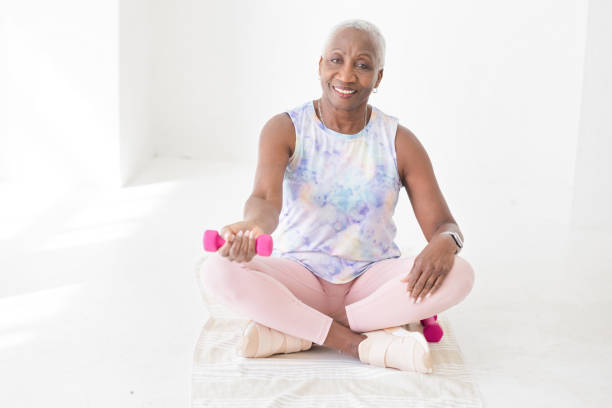
For those in their 60s, 70s, or even older, the thought of building muscle might seem daunting or even unnecessary. Yet according to Dr. Adil Ahmed, assistant professor in the Joseph Barnhart Department of Orthopedic Surgery at Baylor College of Medicine, it’s never too late to start. Strength training as you age can significantly benefit not just muscle mass, but also mental sharpness, bone health, and overall well-being.
The Benefits of Muscle Building in Later Life
1. Musculoskeletal and Brain Health
Muscle plays a critical role in keeping your entire body functional, protecting not only joints and bones but also benefiting the brain. Dr. Ahmed emphasizes that building muscle has a “protective effect” across multiple systems, from musculoskeletal health to brain function. Studies indicate that muscle mass is associated with improved cognitive health, potentially delaying dementia and preserving cognitive function.
2. Bone Health
As we age, bone density naturally decreases, leading to conditions like osteoporosis. Weightlifting and strength training can help combat this loss. Dr. Ahmed notes that maintaining muscle is the only proven way to support strong, dense bones in older adults.
3. Cardiovascular Health
Building muscle requires the heart to work harder, promoting cardiovascular health even in those with chronic conditions like heart failure. When lifting weights, your heart pumps vigorously to deliver oxygen and nutrients to the muscles, supporting both muscle activity and overall heart health.
Getting Started with Muscle Building in Your Senior Years
Before beginning any new exercise program, especially weight training, Dr. Ahmed stresses the importance of consulting a doctor. Seniors may have unique health considerations, and a doctor’s evaluation will ensure that any underlying issues are addressed and managed.
Once you’ve received medical clearance, Dr. Ahmed suggests starting with controlled resistance training, which uses machines or bands for safety and consistency. From there, you can gradually progress to free weights.
Key Steps to Begin Safely
- Start with Resistance Machines or Bands. For those new to strength training, controlled resistance exercises can provide a solid foundation. Machines and resistance bands offer stability, enabling beginners to focus on building muscle without the risks associated with improper technique.
- Progress to Free Weights. As your confidence and strength improve, consider incorporating free weights into your routine. Free weights like dumbbells and barbells engage multiple muscle groups, including the core, as they require balance and coordination, which are essential for functional strength. Free weights also offer flexibility, allowing a wide range of exercises tailored to individual goals and abilities.
- Focus on Technique. Good technique is key for preventing injury, particularly for older adults. If possible, work with a qualified personal trainer or an experienced friend who can help ensure your form is correct. Improper technique can lead to strains or injuries, which could hinder your progress and affect your mobility.
How Muscle Building Affects Aging Bodies
Muscle building does more than enhance physical appearance; it offers functional benefits that make everyday tasks easier and safer. For older adults, these benefits can be life-changing, reducing the risk of falls, improving posture, and enhancing mobility.
Cardioprotective Effects
Dr. Ahmed highlights how weightlifting provides cardiovascular benefits. Strength training sessions engage the heart, conditioning it to pump harder, which improves blood flow and cardiovascular endurance. This type of training can be particularly helpful for seniors with heart issues, as it promotes a stronger, healthier heart without the need for high-intensity aerobic workouts.
Overcoming Common Barriers to Muscle Building in Seniors
For many seniors, barriers to starting a weightlifting routine can be psychological as much as physical. There may be fear of injury, unfamiliarity with equipment, or concerns about looking out of place in a gym setting. Here are some tips for overcoming these barriers:
- Start Small and Build Gradually. Begin with lighter weights or simple resistance exercises to build confidence and strength over time. Focus on consistency rather than intensity initially.
- Seek Professional Guidance. A personal trainer experienced in working with older adults can create a tailored program that matches your abilities and goals. They can also help with motivation and accountability.
- Consider Group Classes or Senior Fitness Programs. Many fitness centers offer group classes designed for older adults. These classes are often structured for safety and community, making it easier to stay committed and build camaraderie.
Sample Beginner Strength Training Routine for Older Adults
To get started, here’s a sample beginner strength training routine that incorporates resistance exercises for core muscle groups. Aim to perform this routine two to three times a week, with rest days in between sessions.
- Seated Leg Press (using machine)
- 2 sets of 10–12 reps
- Strengthens the legs while minimizing strain on the joints
- Chest Press (using machine or resistance bands)
- 2 sets of 10–12 reps
- Builds upper body strength and improves posture
- Dumbbell Bicep Curl
- 2 sets of 10–12 reps
- Enhances arm strength and grip
- Seated Row (using machine or resistance bands)
- 2 sets of 10–12 reps
- Strengthens the back and helps with posture
- Bodyweight Squats or Chair Squats
- 2 sets of 10 reps
- Improves leg and core strength, essential for balance and mobility
- Core Twist (using a medicine ball or light dumbbell)
- 2 sets of 10 twists on each side
- Engages core muscles, supporting balance and stability
For seniors, weight training is more than a fitness activity—it’s a path to better health, improved independence, and a higher quality of life. As Dr. Ahmed puts it, “Don’t be afraid of the weight room.” With proper guidance, you can embrace strength training to boost your health, stay active, and maintain confidence as you age.








